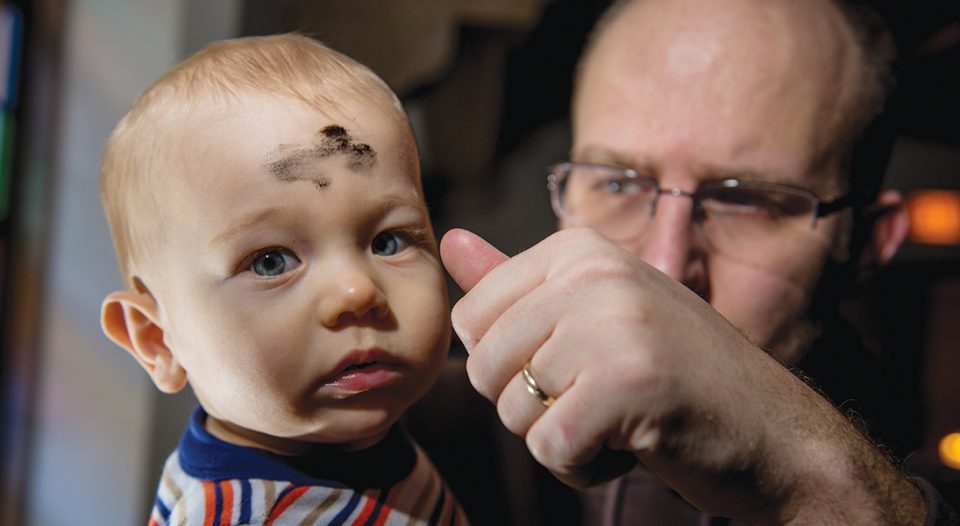My first Ash Wednesday as a father, my little boy greeted me. “Color?” he asked. He grabbed my hand and pointed toward the table where crayons, paper and scribbles waited.
But there wasn’t time for coloring that morning, or so I thought. I was already dressed in my collar, ready to head into the office to prepare for a day of sackcloth, ashes and repentance. What pastor has time for coloring on Ash Wednesday? Life and death were at hand.
Many people would pass out ashes that day. Some churches would do it on street corners and at bus stops, reminding people of their mortality as they headed to work. I’m sure there is meaning for many in those public acts, but somehow I couldn’t justify just smudging people as they went about their day and have that be it.
Ash Wednesday can turn into simple piety when done on the fly. I feared there wouldn’t be enough time to do the act justice, and time is that precious real estate Ash Wednesday seems to take silent stock of.
While holding some merit, I now realize how my objection to “ashes on the go” was a bit foolish. As I come upon this Ash Wednesday, having buried some of those people I had previously marked on that day, I realize the only real estate we need is that small portion of skin just above our eyes.
Take your ashes as you can, I say now, because Ash Wednesday isn’t so much about time as it is about timelessness—how we are marked with the cross of Christ forever.
That very old mark on that ever-aging real estate of skin reminds us that God doesn’t abandon us in life or death.
The oil we use for mixing the ashes on this solemn day is the same used to anoint the head of the newly baptized, marking the cross on their foreheads. It’s the same oil used to bless the hands of our new members, anoint the head of the sick and grace the head of the dead.
The oil, in that same sign, is the connective tissue that ties all those moments and people into that death and resurrection we remember with repentant hearts on Ash Wednesday.
When I mix oil in those burnt palm fronds—the burnt Hosannas we sang on the previous Palm Sunday—and mark that cross on those foreheads, I’m really just coloring in every single cross that was and will be marked there throughout their Christian journey: in baptism, mission, sickness and death.
That very old mark on that ever-aging real estate of skin reminds us that God doesn’t abandon us in life or death. God doesn’t abandon us whether we’re shouting Hosanna or feeling cursed and repentant. God never abandons us.
My son was right, of course. We would color that day, though it wouldn’t be how I’d expected it. With tears in my eyes, I colored in that little cross that had been made by his grandfather in that same oil at his baptism. I colored in the only real estate he’d ever need—that sign of the cross that marked him with the promise of God forever.
What pastor has time for coloring on Ash Wednesday? All of them, it turns out.





